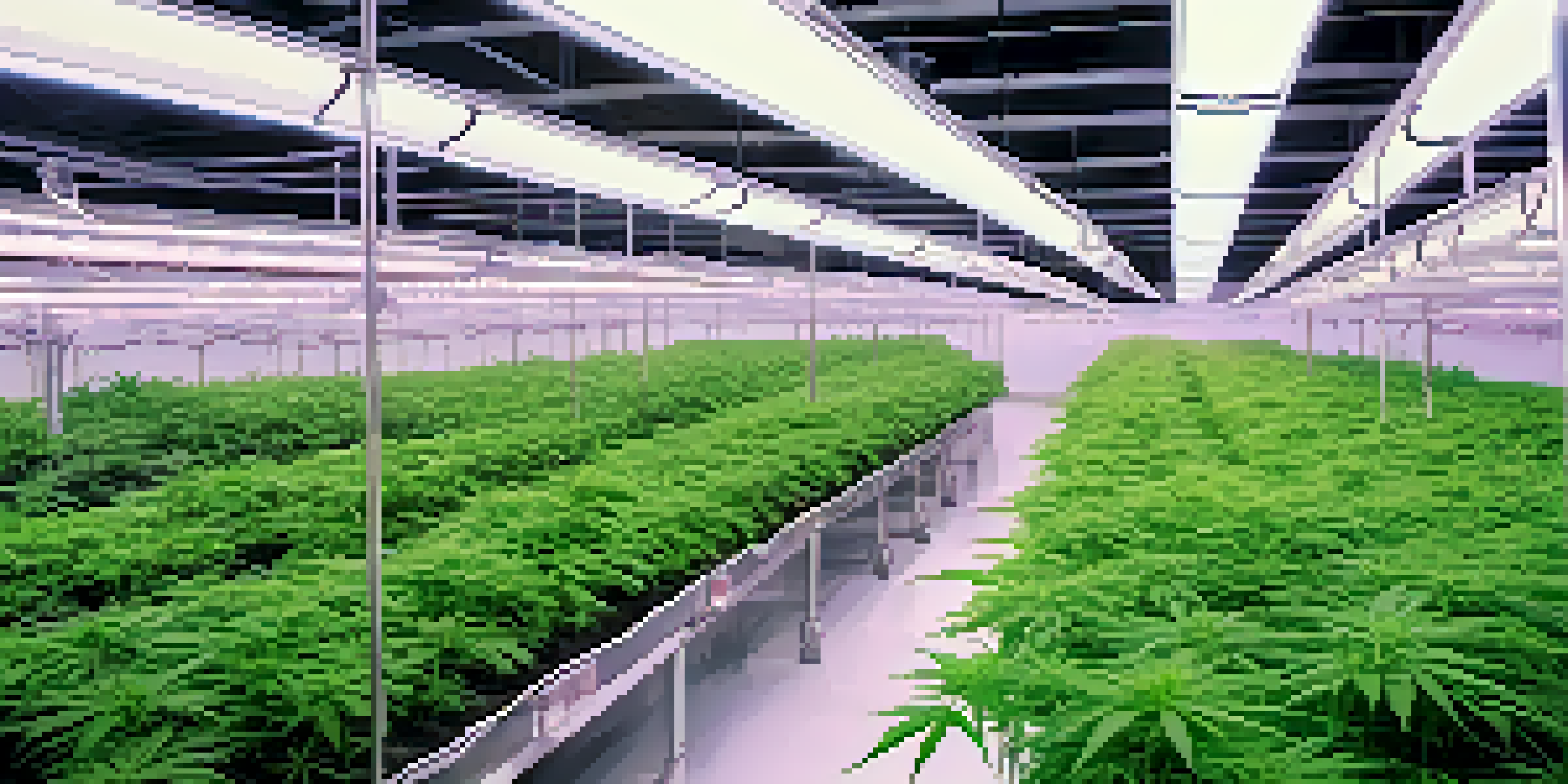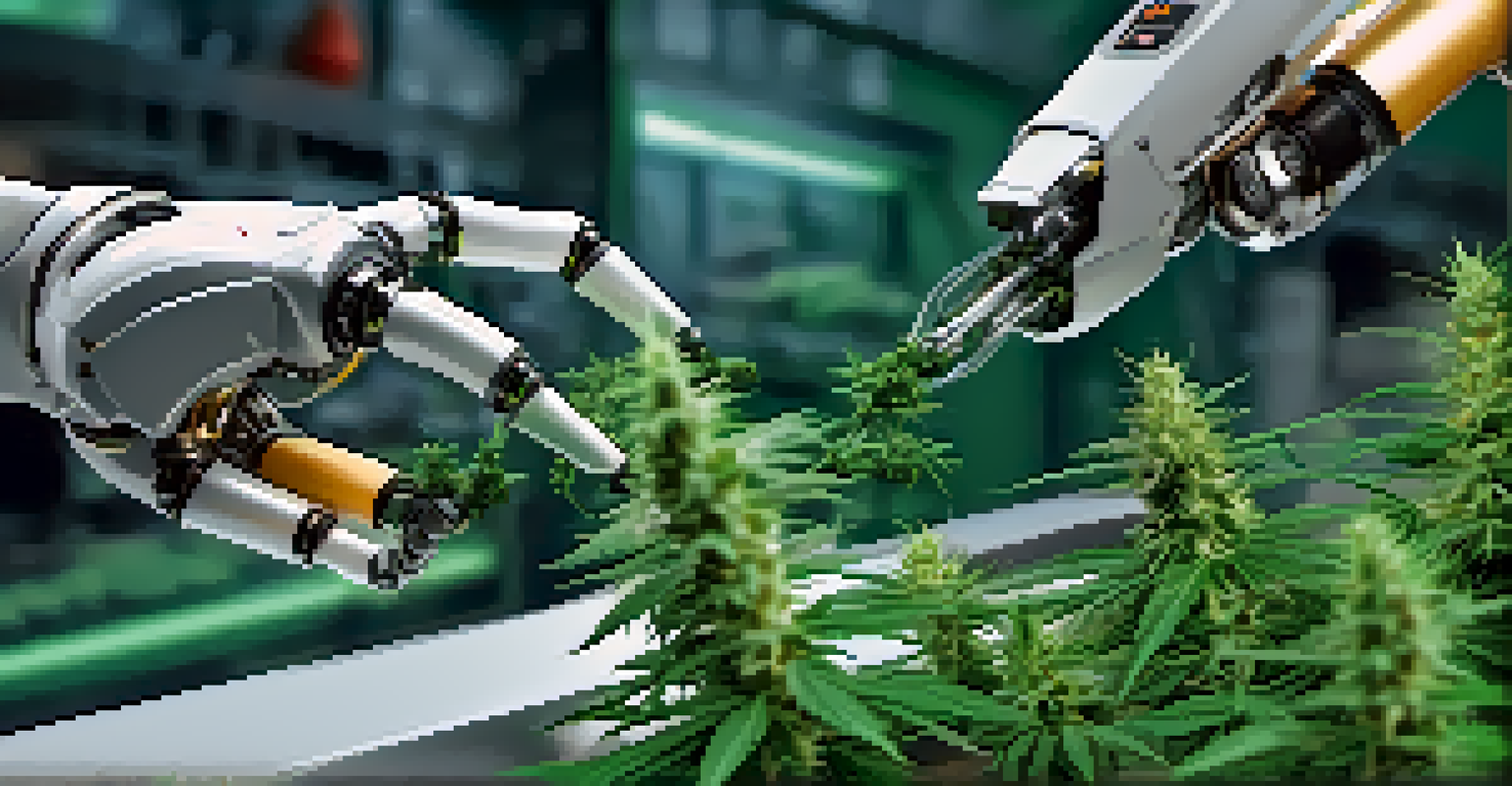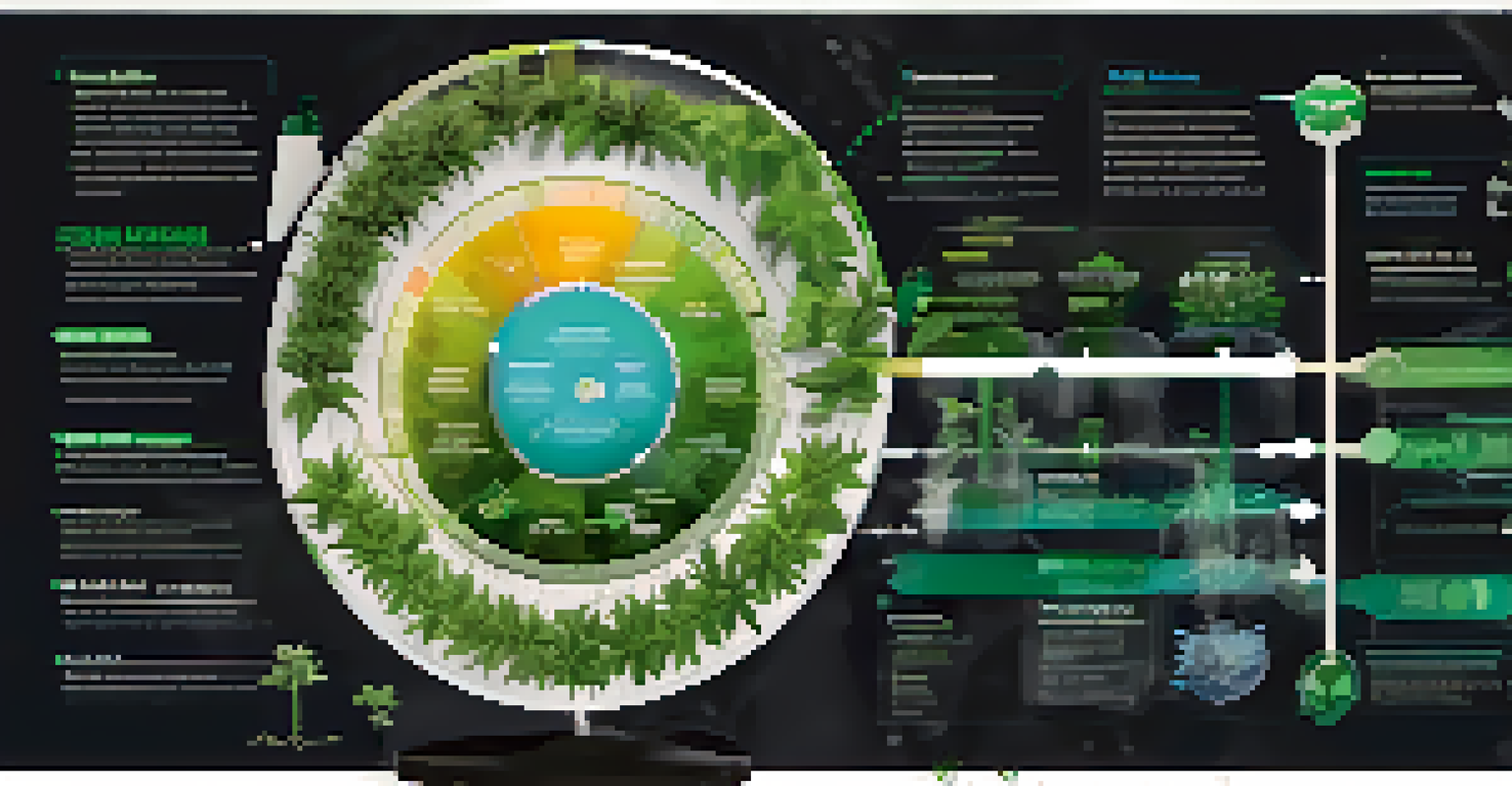How AI is Transforming Marijuana Cultivation Techniques

Understanding AI's Role in Agriculture
Artificial Intelligence, or AI, has been making waves across various industries, and agriculture is no exception. In marijuana cultivation, AI technologies are being integrated to optimize growth conditions and yield quality. By utilizing data-driven insights, growers can make informed decisions that lead to healthier plants and increased production efficiency.
The future of agriculture is not the same as the past; it is about precision and data-driven decisions.
For instance, AI systems can analyze environmental data such as temperature, humidity, and light levels to create optimal growing conditions. This not only enhances the quality of the marijuana but also reduces resource waste, making cultivation more sustainable. Think of it as having a personal assistant that constantly fine-tunes the environment for your plants.
As the marijuana market continues to expand, the importance of employing modern techniques like AI becomes clear. Growers who embrace these innovations can stay competitive, ensuring that they produce high-quality products that meet the growing demand.
Predictive Analytics for Crop Management
One of the most significant benefits of AI in marijuana cultivation is predictive analytics. By analyzing historical data, AI can forecast potential issues before they become problematic. For example, if a certain strain of marijuana is known to thrive in specific conditions, AI can predict how changes in the environment might impact its growth.

This proactive approach allows cultivators to adjust their strategies, whether that means altering watering schedules or adjusting nutrient levels. It’s akin to having a crystal ball that gives insight into the best practices for each batch of plants. As a result, growers can maximize their yield and reduce the risk of crop failure.
AI Enhances Marijuana Cultivation
AI technologies optimize growth conditions and yield quality in marijuana cultivation.
Moreover, predictive analytics can also help in pest and disease management. By identifying patterns in previous infestations, AI can alert growers about potential threats, allowing them to take preventive measures and protect their crops effectively.
Enhancing Quality Control with AI Technology
Quality control is crucial in marijuana cultivation, and AI plays a pivotal role in ensuring that every plant meets the desired standards. Using machine learning algorithms, growers can analyze data from various sources, including soil health and plant growth metrics, to maintain consistency. This technology helps in identifying any deviations from the norm early on.
Technology is best when it brings people together and solves their problems.
For instance, AI can assess the color, size, and overall health of the plants through image recognition technologies. If any plants show signs of distress or disease, they can be isolated and treated promptly, ensuring that the overall quality of the yield remains high. Imagine having an extra set of eyes that never miss a detail!
By implementing AI-driven quality control measures, cultivators not only enhance the product they deliver but also build trust with consumers. Consistent quality leads to stronger brand loyalty, which is vital in a competitive market.
Automating Irrigation and Nutrient Delivery
Watering and nutrient delivery are fundamental aspects of marijuana cultivation, and automation powered by AI can streamline these processes. Smart irrigation systems use AI to determine the optimal amount of water needed for each plant based on real-time data. This ensures that plants receive just the right amount of moisture, promoting healthy growth while conserving water.
In a similar vein, AI can manage nutrient delivery, adjusting the composition based on the specific needs of the plants at different growth stages. It’s like having a chef who knows exactly how to season a dish to perfection, depending on the ingredients. This precision leads to healthier plants and ultimately a more potent product.
Predictive Analytics Improve Yield
By forecasting potential issues, predictive analytics allow growers to adjust strategies for maximum yield.
With automation in place, growers can save time and labor costs while minimizing human error. This not only improves operational efficiency but also enhances the overall sustainability of marijuana cultivation.
AI-Assisted Breeding for Optimal Strains
Breeding new strains of marijuana is an art and a science, and AI is taking this process to new heights. By analyzing genetic data, AI can help breeders identify which traits are most desirable and predict how these traits will manifest in future generations. This data-driven approach to breeding accelerates the development of optimal strains that can thrive in various environments.
For example, if a breeder wants to create a strain that is resistant to certain pests, AI can analyze existing genetic information and suggest the best breeding pairs to achieve that goal. It’s similar to using a matchmaking service that finds the perfect partner based on shared traits and compatibility.
As a result, cultivators can produce strains that not only meet consumer preferences but also adapt to changing environmental conditions. This innovative breeding process can lead to a more resilient and diverse product offering in the market.
Utilizing Robotics for Harvesting and Processing
The integration of robotics into marijuana cultivation is revolutionizing the harvesting and processing stages. Automated systems can efficiently harvest plants at the optimal time, ensuring that the quality is preserved. This technology reduces the risk of human error and labor shortages, which can be a significant challenge in the industry.
Imagine a robotic arm that can delicately pick buds without damaging the plants, much like a gentle hand. This precision not only increases efficiency but also maintains the integrity of the product, leading to higher-quality output. Additionally, robots can be programmed to sort and package the marijuana, streamlining the entire post-harvest process.
Robotics Streamline Harvesting Process
The use of robotics in harvesting ensures quality preservation while reducing labor challenges in marijuana cultivation.
As the industry continues to grow, robotics will play an increasingly vital role in meeting demand while keeping production costs manageable. This shift towards automation helps cultivate a more sustainable future for marijuana growers.
Ethical Considerations in AI-Driven Cultivation
While the benefits of AI in marijuana cultivation are numerous, it's essential to address the ethical considerations that come with it. As growers adopt these advanced technologies, they must also ensure that they are using data responsibly and maintaining transparency with consumers. Ethical practices are vital in building trust within the industry.
For example, growers should be transparent about how AI is used in their cultivation processes, particularly when it comes to data collection. Consumers increasingly want to know where their products come from and how they were grown. By fostering an open dialogue about AI's role, cultivators can enhance their brand reputation.

Furthermore, it’s crucial to consider the impact of AI on employment within the industry. While automation can improve efficiency, it may also lead to job displacement. Striking a balance between technological advancement and workforce support will be essential for a sustainable future in marijuana cultivation.